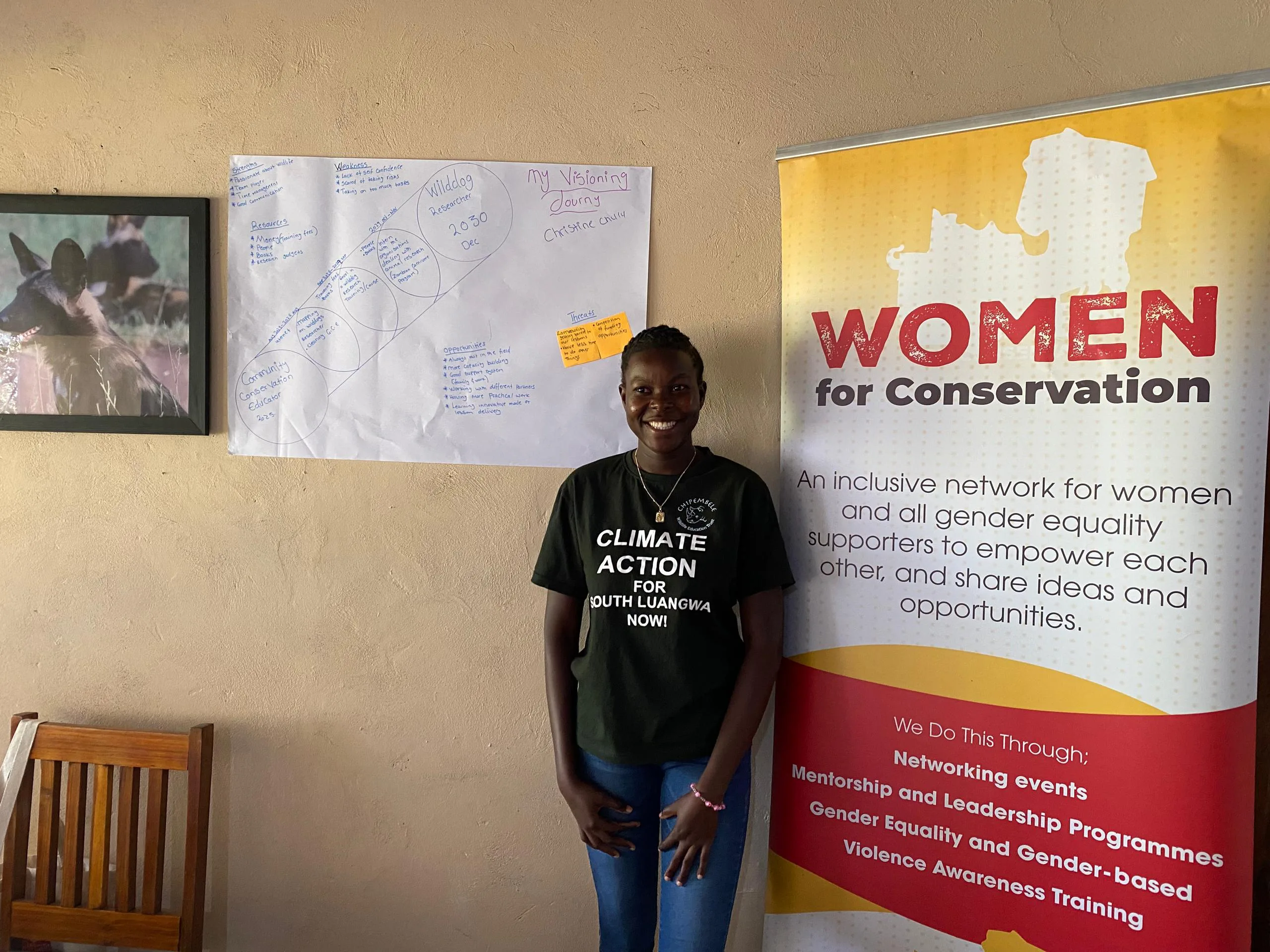By Salima Mvula
A diverse and inclusive workforce is vital for the future of conservation. When women and men work side by side, the sector becomes stronger, more resilient, and better equipped to deliver lasting solutions. Inclusion also creates space for men to serve as informed allies, advocating for equity and supporting women to thrive as leaders. This vision lies at the heart of WCP’s Women for Conservation (W4C) Programme, which fosters community among women through quarterly networking events and annual fellowships, both physical and virtual, that provide opportunities to connect, share insights, and learn. By breaking down isolation and encouraging collaboration, W4C empowers women to take on leadership roles while building the next generation of conservation leaders in a balanced, representative movement capable of driving meaningful change.
Launched in May 2025, the Women for Conservation Leadership Programme, an initiative formed under W4C, has brought together five emerging leaders with backgrounds ranging from community conservation engagement to environmental science. The programme set out to strengthen their leadership skills while deepening their understanding of gender equality in conservation.
In its first phase, participants engaged in two online learning sessions that introduced foundational concepts, including the influence of social norms on gender, barriers to women’s participation in natural resource management, and the dynamics of power relations in conservation spaces. These virtual dialogues laid the groundwork for deeper reflection and set the stage for practical, in-person learning.
The second phase of the programme took participants out of their daily environments and into nature for a two-day training facilitated by Nelly Nyirenda and Samantha Munang’andu from the Women’s Land and Resource Rights Platform.
The training created a collaborative space where theory met practice. Participants explored gender norms, roles, and power dynamics, recognising how inequalities, rooted in socially constructed roles, shape opportunities for women. Through a “24-hour calendar” exercise, they compared the responsibilities of men and women at work and at home. While workplace duties appeared similar, women consistently bore the additional “second shift” of unpaid household labour.
Godfrey, one of the male participants, candidly acknowledged this imbalance, noting that men often enjoy greater freedom for self-improvement and leisure, while women’s growth is restricted by domestic expectations. His reflection highlighted the importance of men as allies in challenging structural barriers and reshaping norms.
Sessions on Power, Women’s Participation, and Gender-Based Violence (GBV) pushed the discussion further, linking unequal dynamics to the barriers women face in conservation careers. The group examined how GBV manifests in families, communities, and institutions, and considered strategies for creating safer, more equitable workspaces.
These reflections highlighted the need for gender-responsive workplace policies, not just equality on paper, but equity in practice. The participants committed to fostering professional environments where women can thrive without fear, constraint, or bias.
Beyond structural issues, the training also focused on individual leadership journeys. Through exercises such as SWOT analyses and the ‘Tree of Life’, participants reflected on their personal histories, present realities, and future aspirations.
For Mwango, an emerging leader in the programme, the Tree of Life exercise illuminated the roots of her passion, which began in childhood through conservation clubs before she pursued environmental science. “Tracing my roots showed me that my career path wasn’t random; it was intentional,” she reflected.
The participants then took part in a ‘Visioning Journey’ exercise, building on insights from the earlier sessions. This activity encouraged them to define their leadership ambitions with greater clarity and accountability. Hellen, another emerging leader, noted: “I used to just wake up and live the day as it comes, but now I see the importance of being intentional about who I want to become.”
Through participatory learning, dialogue, and reflection, the programme continues to equip these emerging leaders with both the confidence and the tools to shape conservation spaces that are inclusive and equitable. By exploring social norms, power dynamics, and personal growth side by side, the emerging leaders developed a vision of leadership that challenges existing barriers while inspiring systemic change.
The Women for Conservation Leadership Programme demonstrates that building a balanced workforce strengthens conservation efforts as a whole. By giving women, a stronger voice and engaging men as allies, the movement lays the foundation for a new generation of leaders who are capable of driving meaningful change in their communities and beyond.


0 Comments